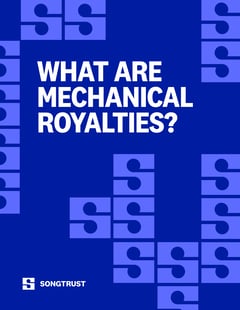Mechanical royalties are earned through the reproduction of copyrighted works in digital and physical formats. They are paid out to songwriters as songs are sold, downloaded, and streamed. The standard mechanical rate for physical and download sales in the U.S. is set by the Copyright Office and is called the statutory rate.
Although the term "mechanical" and the mechanical license have their origins in the player piano rolls on which music was recorded in the early part of the 20th century, the scope of their modern usage is much wider and covers any physical or digital reproduction of a copyrighted audio composition.
Consequently, it may include streams, compact discs, vinyl records, cassette tapes, music videos, ringtones, MIDI files, downloaded tracks, DVDs, VHS, computer games, musical toys, and more.
Can You Give Me an Example?
You just released your first single through a DIY distributor like CD Baby or DistroKid. When your fans listen to that song on streaming services like Apple Music and Spotify, those streams generate both performance and mechanical royalties.
Another example of how you earn mechanical royalties is when your fans participate in Record Store Day by visiting their local record store and buying your newest album on vinyl. Because your songs have been physically reproduced onto a record, you earn mechanical royalties.
Mechanical royalties are not always easy to collect as an independent songwriter. To ensure you're collecting all these royalties, you should have a publishing administrator registering your songs at global collection societies on your behalf.
To learn more about CMOs and other music publishing terms, head over to our Glossary for additional articles and resources.





